Understanding Vygotsky’s Zone of Proximal Development in eLearning
Vygotsky’s Zone of Proximal Development (ZPD) framework keeps learners motivated, engaged, and supported throughout their learning. Read now to explore how.
Vygotsky’s Zone of Proximal Development (ZPD) framework keeps learners motivated, engaged, and supported throughout their learning. Read now to explore how.
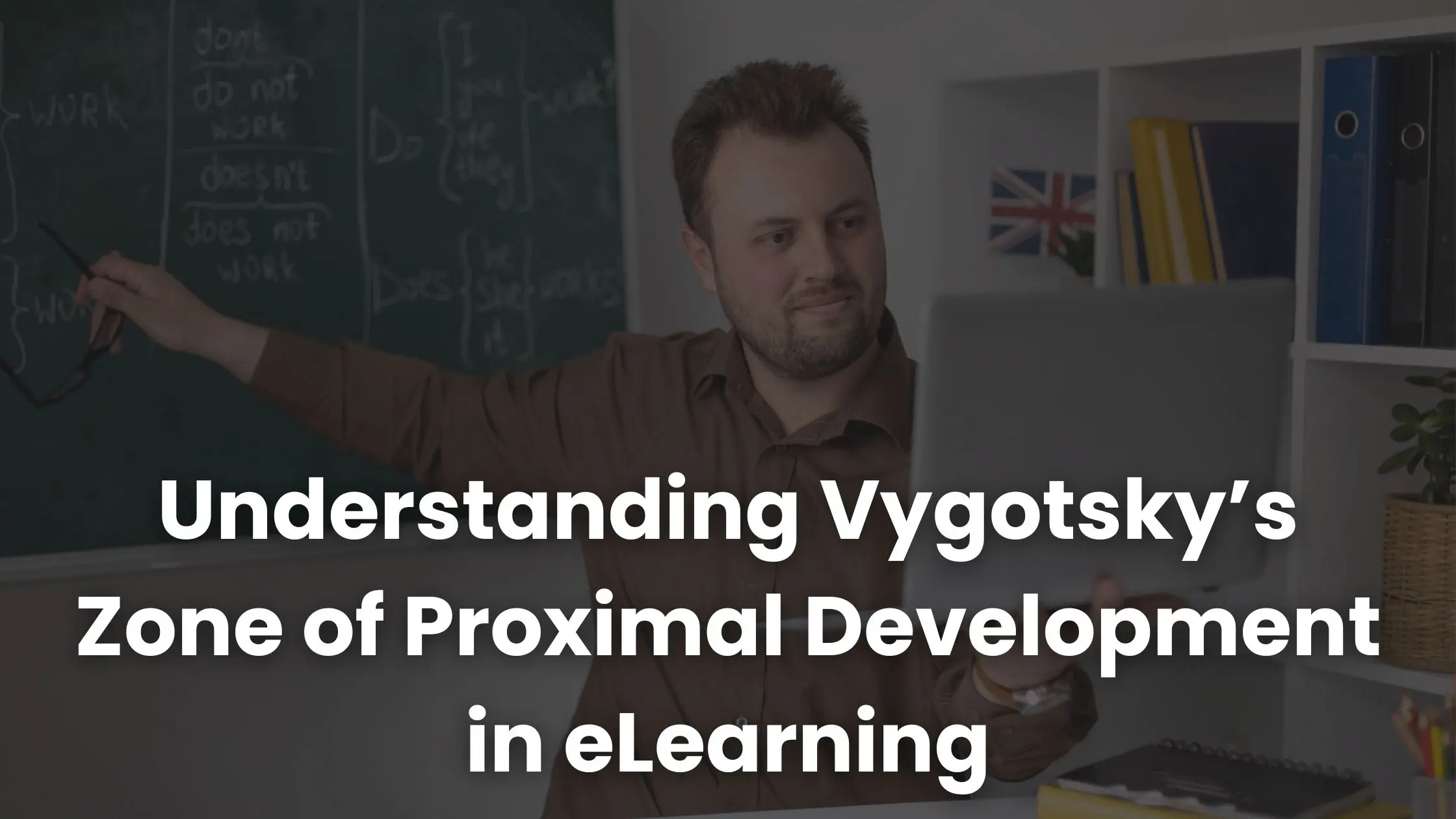
If you’re a trainer or an educator, you’d know that psychological factors greatly influence learning outcomes. It could be self-efficacy, motivation, anxiety, or other similar aspects. This applies to both online and in-person learning.
As online education continues to evolve, understanding core psychological theories that influence learning can help you design and deliver training more effectively. One such influential concept is Lev Vygotsky’s Zone of Proximal Development (ZPD).
This psychological framework emphasizes that effective learning occurs within a specific space, where more knowledgeable individuals support learners in accomplishing tasks that exceed their current capabilities. By applying the principles of the ZPD in eLearning, you can create personalized, engaging, and growth-oriented training programs.
In this article, we will explore what Vygotsky Proximal Zone of Development is and how you can incorporate it into your training design. Let’s dive in.
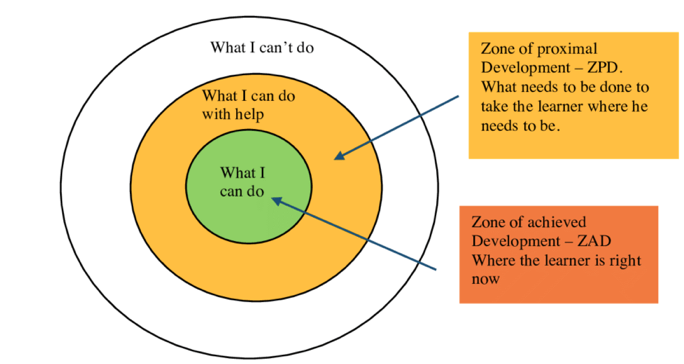
The Zone of Proximal Development is a concept introduced by Lev Vygotsky, a renowned Soviet psychologist and social constructivist. It refers to the "sweet spot" of learning, the space between what a learner can do independently and what they can accomplish with some guidance or collaboration.
Learning within this zone is most effective because it challenges the learner without causing frustration. The idea emphasizes that social interaction, guidance, and scaffolded support are essential components for fostering development and skill mastery.
Think of the Zone of Proximal Development by Vygotsky as a "gap.” It is the range of tasks that a learner cannot yet perform alone but can succeed with help. Such help might take the form of hints, explanations, demonstrations, or peer collaboration.
When appropriately targeted, this support enables learners to stretch their abilities and progress toward independent mastery.
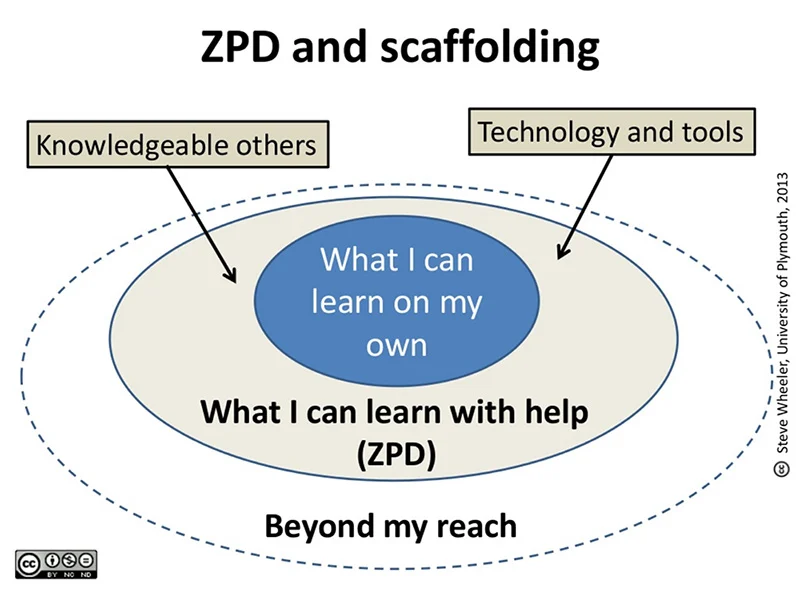
To truly grasp how Vygotsky’s Zone of Proximal Development works, it's important to understand its three core components that form the foundation of this learning theory. Here is a quick overview of each element:
The More Knowledgeable Other refers to anyone who possesses a higher level of understanding or skill relative to the learner. This could be a teacher, mentor, peer, parent, or an AI assistant tool.
The MKO guides, models, and supports the learner through tasks that they cannot yet complete independently.
The interaction with the MKO allows learners to receive customized help, such as explanations, hints, demonstrations, or feedback, that is targeted to their specific needs within their zone of development.
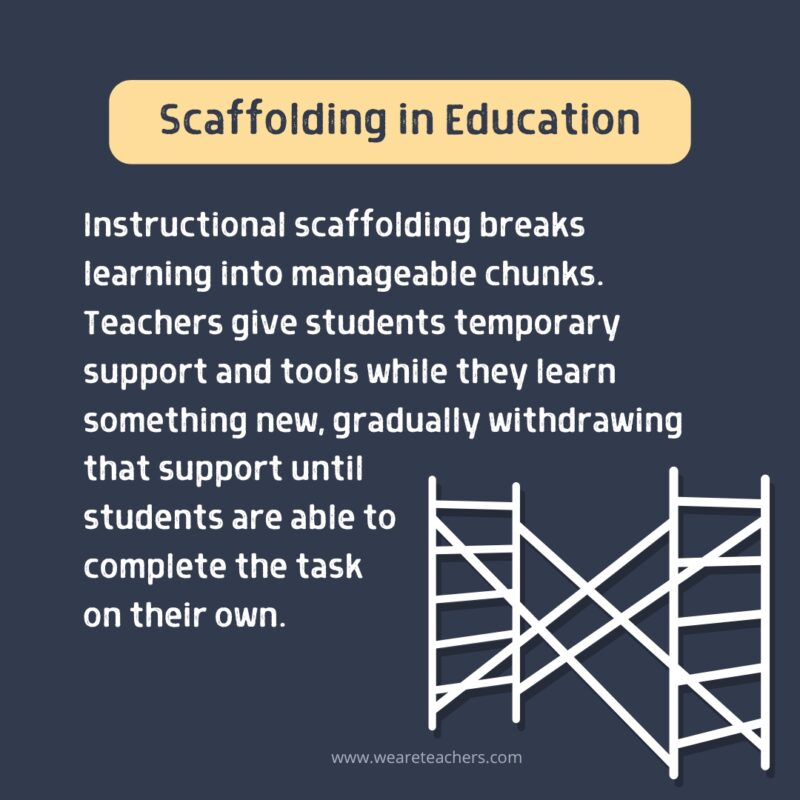
Scaffolding is the temporary, adjustable support that the MKO provides to learners as they work through new or challenging material within their ZPD. This support can come in many forms, such as breaking tasks into manageable steps, providing prompts, asking guiding questions, or offering tools that simplify complex tasks.
The key aspect of scaffolding is that it is not permanent. It is gradually removed as learners gain the skills and confidence to perform tasks on their own. This gradual release helps learners build independence and mastery systematically.
According to Vygotsky, learning is deeply social. Social interaction is the process through which the learner and MKO engage in collaborative dialogue and shared activity. This interaction is critical because it provides the language, cultural norms, motivation, and context that shape how knowledge is constructed and internalized.
In Vygotsky’s Zone of Proximal Development, learners actively participate in conversations, receive immediate feedback, and negotiate meaning, which drives cognitive development. In contemporary eLearning, this can take place through virtual classrooms, discussion boards, peer collaborations, or AI-powered conversational agents.
Together, these components form a dynamic triangle where learner development is optimized. MKO provides tailored scaffolding through meaningful social interaction.
When effectively integrated into eLearning, the ZPD framework ensures that learners remain challenged without feeling frustrated. This makes the learning process both motivating and effective.
When you design eLearning targeting the ZPD, you ensure learners face challenges that are neither too easy nor too overwhelming. This optimal level of difficulty fosters sustained engagement and motivation. Learners become confident as they tackle tasks they couldn't do before, but with just enough guidance that success feels attainable.
The ZPD tailors learning paths based on individual learner readiness. Instead of generic content, you can scaffold lessons and activities that respond to each learner’s current skills and knowledge gaps. This personalized approach maximizes learning efficiency and satisfaction.
Unlike traditional classroom settings, eLearning often risks isolation. Vygotsky’s Zone of Proximal Development reminds us that social interaction with instructors, peers, and AI tools is vital.
Incorporating collaborative forums, live discussions, and real-time feedback channels replicates this social support, enabling learners to benefit from guided assistance and peer learning even online. Even AI chatbots can act as knowledgeable guides.
Applying the ZPD also means planning for the gradual fading of support. Initially, learners receive more scaffolding, but as they master tasks, you reduce help to foster independence. This progression builds lifelong learning skills, which are essential in today’s fast-evolving workforce.
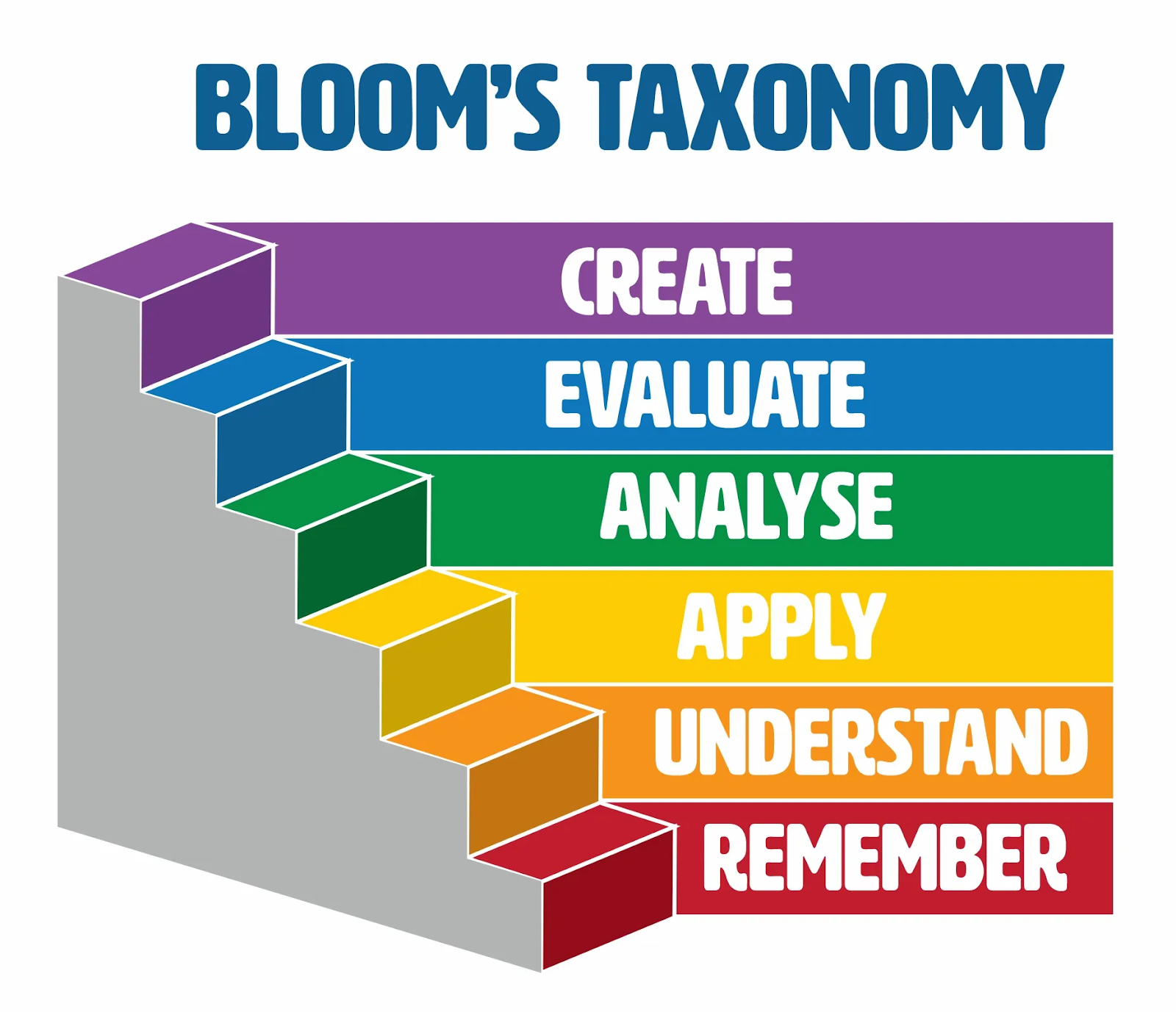
Vygotsky’s Zone of Proximal Development centers on the gap between what learners can do independently and what they can achieve with guidance. It also emphasizes social interaction and scaffolding to enable learning. Bloom’s Taxonomy, on the other hand, is a hierarchical framework that categorizes learning objectives into cognitive levels, from basic knowledge recall to complex creation.
While Bloom’s Taxonomy provides a structured roadmap to design learning outcomes and assessments, it does not inherently address the social support mechanisms or learner readiness that the ZPD emphasizes.
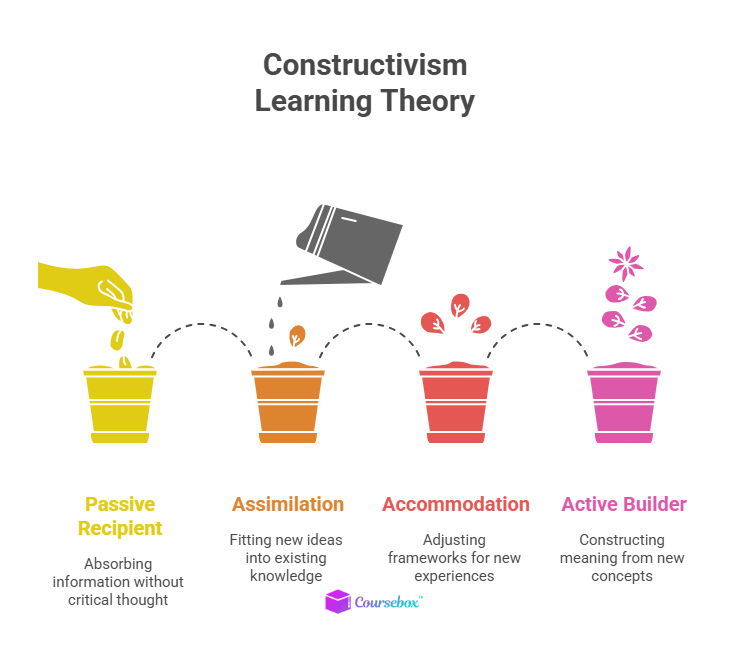
Both Vygotsky’s ZPD and Constructivism highlight active learner involvement in constructing knowledge rather than passive absorption.
However, Constructivism broadly focuses on learners building their own understanding through experience and reflection. Meanwhile, ZPD specifically highlights the role of a More Knowledgeable Other in providing scaffolded support to bridge learning gaps.
Social context is important in both, but ZPD highlights guided social interaction as the catalyst for reaching new developmental levels.
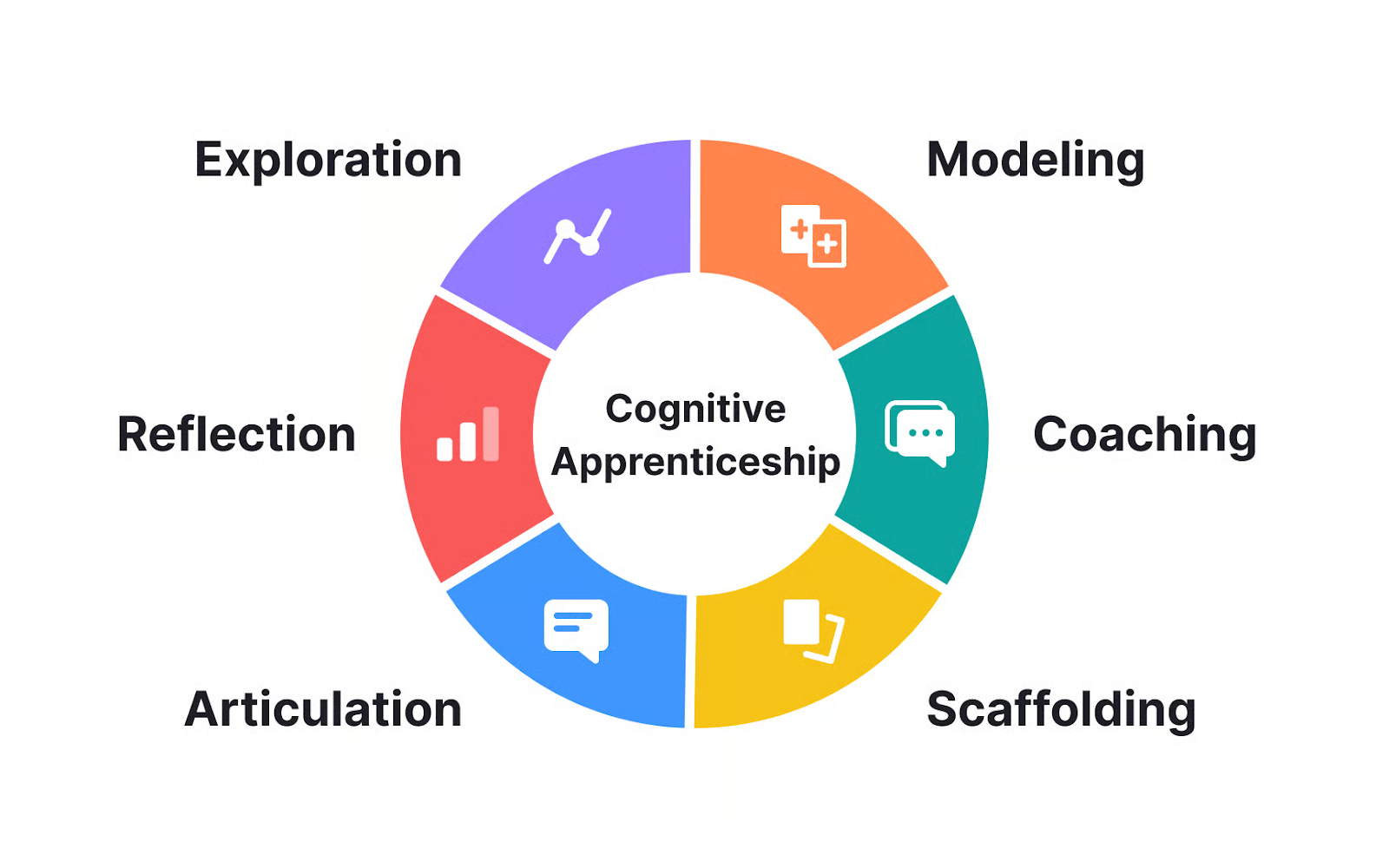
Cognitive Apprenticeship shares a close tie with ZPD by emphasizing learning through guided experiences, modeling, coaching, and the gradual transfer of responsibility for authentic tasks. Both approaches stress the importance of the learner observing, practicing, and receiving feedback from an expert or mentor.
The distinction is that Cognitive Apprenticeship often operates within real-world, context-rich environments that simulate professional practice. On the other hand, ZPD can be applied broadly to any learning scenario that requires scaffolded guidance.
Vygotsky’s Zone of Proximal Development is a valuable framework for designing engaging, personalized, and socially rich eLearning experiences. By identifying that "just right" learning zone and providing the right scaffolding and interaction, trainers and educators can accelerate learner growth and boost confidence.
Fortunately, AI tools like Coursebox facilitate educators in harnessing these principles with ease. It offers AI-powered course creation that adapts to individual learner readiness, ensuring every participant gets content suited to their current skill level. The AI chatbots provide on-demand support and scaffolding tailored to learner needs, and automated assessments track their progress.
Altogether, Coursebox creates a seamless environment that enables you to guide learners expertly through their zone of development. Sign up for free now to apply Vygotsky’s Zone of Proximal Development in your next training program.
The Zone of Proximal Development (ZPD) is the range between what a learner can do independently and what they can achieve with guidance or collaboration. It highlights the importance of providing learners with just the right support to help them progress beyond their current abilities. Vygotsky emphasized that social interaction and scaffolding are crucial for effective learning within this zone.
Vygotsky’s Zone of Proximal Development targets tasks that challenge learners just beyond their independent abilities, keeping them engaged and motivated. It encourages personalized learning paths and scaffolded support that evolves as learners gain competence. This approach leads to better retention, deeper understanding, and builds learner confidence.
Social interaction provides a dynamic, supportive environment that allows learners to move through their ZPD by collaborating with instructors, peers, or interactive tools. Scaffolding refers to the adjustable assistance that guides learners through difficult tasks and gradually fades as mastery develops. Together, they create a learning atmosphere rich in support and challenge.
Absolutely. The ZPD is highly relevant in corporate learning as it helps design training that adapts to employees’ skill levels and developmental needs. By integrating social learning, coaching, and adaptive content, organizations can accelerate workforce competency and foster continuous growth.
Coursebox offers AI-powered tools that personalize learning by adapting content complexity and support according to learner readiness, effectively operating within each learner’s ZPD. It also provides interactive collaboration features, real-time AI chatbots for instant guidance, and automated assessments to track progress. These capabilities help create scaffolded, socially engaging learning environments that enhance skill development and learner independence.
